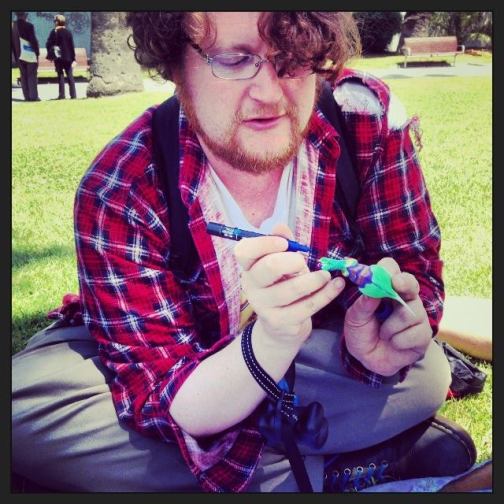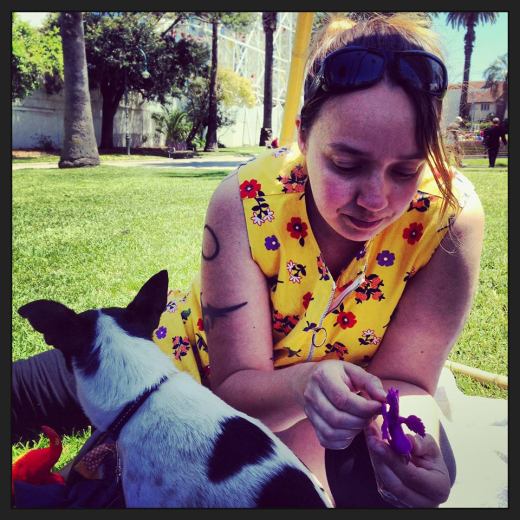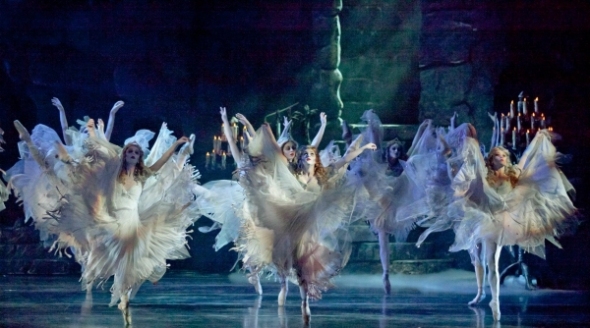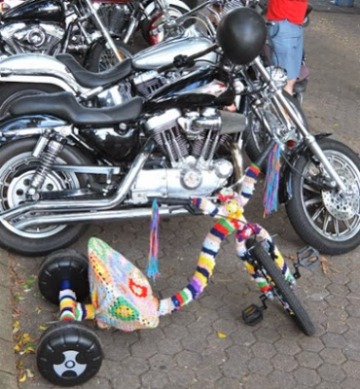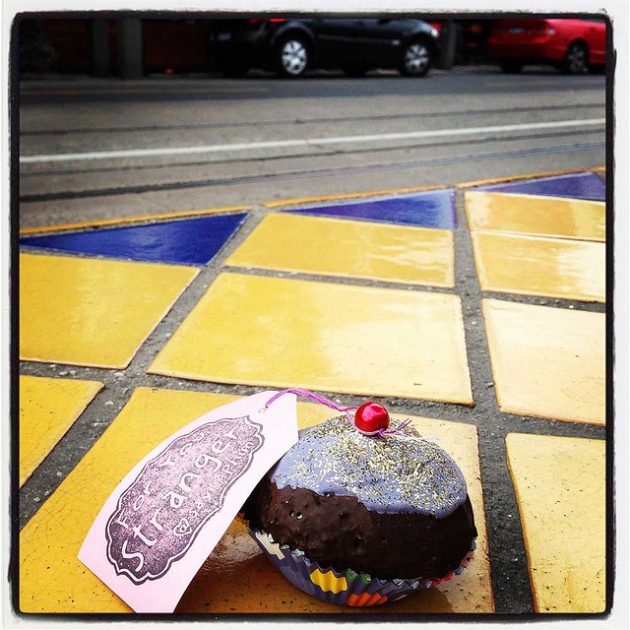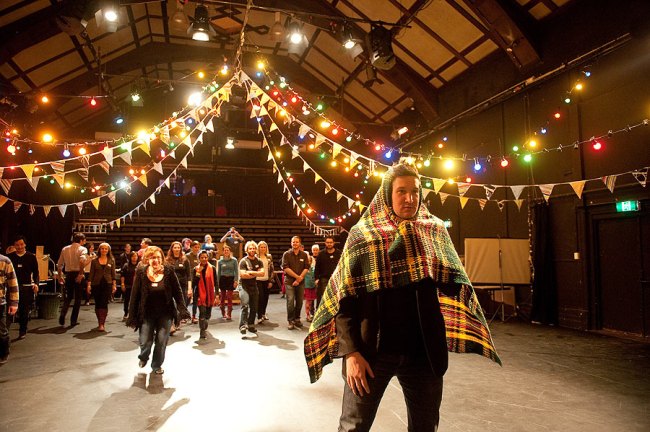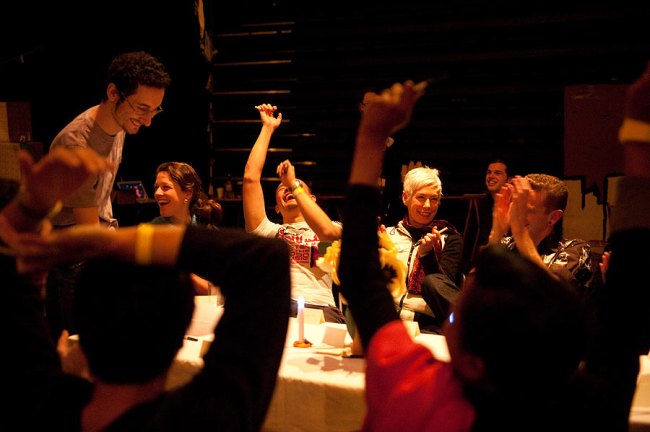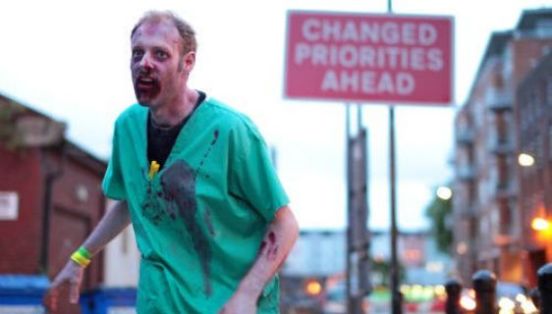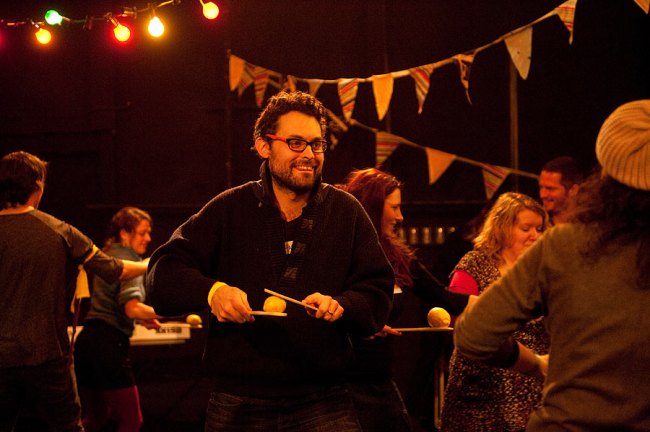Third and final installment of my conversation with Sayraphim Lothian and Robert Reid. I love this one such a lot. It taps into all my thoughts about criticism and trusting your audience. Thank you once again to these two for their generosity. Thank you also to Sarah Walker who proof read all three episodes. I’d look like an idiot without her.
SFB: You are both making work that almost feels like it circumvents the critics or the ‘expert’ commenting on the work.
Sayra: Well the problem for me as a public artist is that public art never gets reviewed. My stuff is tiny, temporary works. It is more towards the street art side than the public art. Nobody every wanders over to Vault to have a chat in The Age about the extraordinary angles or the specific colour of yellow. Nobody reviews that stuff, which is sort of a burden and a freedom. Occasionally internet people talk about my work, not as reviewers but as people who like craft or craftivism or joy or random acts of kindness. I know that critics are problematic at best and it is just an individual’s opinion but I won’t mind being reviewed by someone.
Rob: With Pop Up Playground, there is no language for what we do.
Sayra: Well Anne-Marie came to the first This Is A Door at Theatre Works and loved it and reviewed it. She’s not trying to understand it as theatre. She understands it as ‘this is the awesome thing I did and you should go!’
Rob: Which is just about an ability to read the framework that the experiences is being presented to you in, as opposed to coming with a notion of ‘I am a theatre reviewer. I must review it on these grounds.’ The same people have the language to review a circus performance or a dance work or a cabaret work and all of these things are different and distinct and they have the language. It is because the notion of play as performance is relatively new and under-served here, that they haven’t been forced to make the effort to understand ‘how do I understand this as performance’ that they haven’t developed the language. This is a reflection of how slowly the intellectual process behind analysing of performance happens, not only here in Australia but everywhere.
Sayra: We’re still having that argument with people. When we present the ideas behind Pop Up Playground and they ask ‘yes, but how is that art?’ or ‘How is that theatre?’
Rob: Less and less. Partially because we’re moving away from trying to establish ourselves within the arts community. Not that we want to move out of the arts community but the question is starting to become ‘why are you doing this?’ which is fundamentally the same conversation just with a different value set.
Though the games and play as performance can absolutely be reviewed and critiqued by critics, the best feedback is through the play-testing process or getting Emilie Collier (our writer in residence) to respond. She writes fictional responses to the games, which is wonderful. I think the reason that we have, to an extent, circumvented the critical process with Pop Up Playground is because the critical process here in Australia and probably around the world is broken.
We as artists get so focused on what Cameron and Anne-Marie and Alison and those guys think because it is the only tangible feedback we actually get. I would guess that a lot of the artists who are really focused on that stuff would often have difficulty sitting in a room where their work is being performed and being able to pick up the cues from an audience to be get feedback. Or maybe they won’t even sit there. Or they do it on opening night – which is again a skewed kind of feedback anyway – and then maybe go back on closing night and miss all the feedback from an audience as to whether or not a thing is funny, whether it is working, what the impact is.
Sayra: I think people feel the critics are super educated in their own art form so if the critics get it you get some kind of certificate saying ‘I am actually a Theatre Maker. I am actually an Artist.’ For me in public art and Pop Up Playground, it is really important that the general public can instantly get it.
I don’t come from a theatre background and so when I first met Rob and started going to theatre, a lot of it confused the hell out of me because it is a learned language. It took me years to understand what it was I that I was seeing. For public it was really important that we circumvent that. People can instantly get it. It’s a fake cupcake and it is here purely to make your day or make you smile.
When I was studying art in Year 11 or Year 12, my art teacher presented us with a blank canvas and explained the whole story and all the meaning behind it. Once you understand the huge amount of literature behind it you can go ‘oh my God, that’s awesome’ but still, when you stand in front of it, it is just a blank canvas.
I don’t read the program before I go into a theatre work because if it has to be explained to me before, I feel that it is a failed piece of theatre because I want to sit there and understand it from purely the piece of art that is being presented. So I think it is more important that the general public can get the stuff I’m doing than the well-educated art critic.
SFB: Makes me think about one of the essays you gave us (in the Masters of Writing course at VCA), Rob, which said that in art-like art, your experience is deepened by having this whole backlog of knowledge. You walk into an art gallery and you know what happens in art galleries, whereas in life-like art, you don’t need to know art, you just need to know life. Just live some life and you’ll get it.
Sayra: I went to the ballet once when I was all young and Gothic. It was Dracula and I knew the story but I remember two specific things: One is that they were very bendy – they were boneless – which worked really well for vampires. The other thing was that there were all these certain move that I knew were really meaningful but because I’d never been to the ballet before I had no idea what they were. I had three friends there and we all came out going ‘nope. No idea.’ And we could sort of see the story in it because we knew the story but it was very difficult to find because of all the Meaningfulness that was happening and we weren’t a part of it.
Rob: We forget that. Not only do we forget that but we don’t like it being pointed out to us that not everybody has had the conversations about Chekhov and Ibsen and Strindberg. Not everybody has had the conversations about post-dramatic theatre and adaptations and, for the most part, they don’t give a fuck either.
Sayra: Although everybody might not understand theatre or ballet or something, everybody knows how to play.
Rob: And everybody can be told a story. Everybody can tell a story. These are the basics of the art form that we all share, that we have spent a lot of time as artists rarefying and saying ‘no, no, no, you can’t do that the way we can do that. That makes us special.’ That tells 80% of the country that they are not involved and that they shouldn’t come because this is only for Special People who understand. It takes a basic human need away from humanity in the service of our ego.
Sayra: Alright, last story! Last story I promise! In our first public performance for Pop Up Playground was at the NGV studio and it was on Grand Final weekend. As artists we were going ‘we’re going to get beaten up! All of the football fans are coming in to the CBD and we’re going to get beaten up!’ Which we didn’t. But not only that –
Rob: These things are exaggerations for colour.
Sayra: Shhh! We had a family in football jerseys come in and play games. And we’ve never had anybody in football paraphernalia come to any of the theatre shows we’ve ever been to, let alone anything we’ve ever done.
Now we promise we’ll stop.

